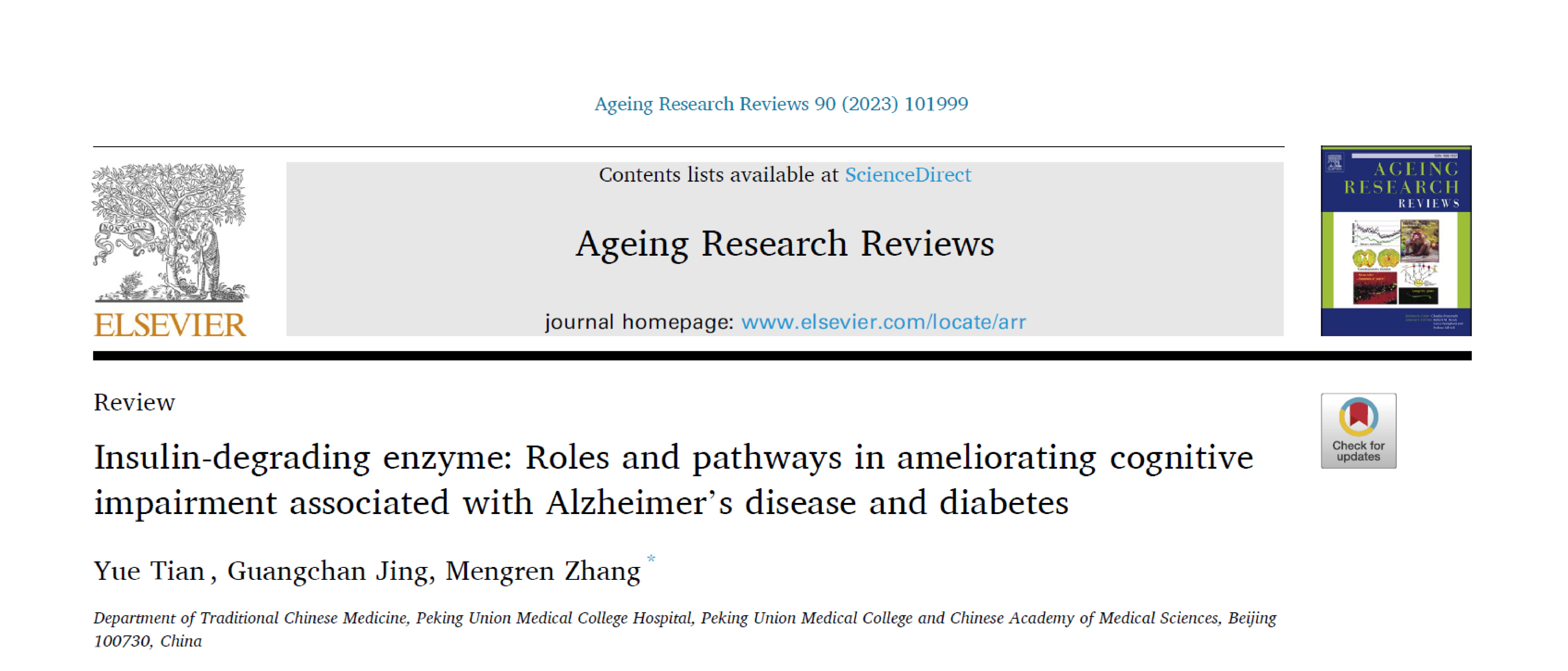The team led by Professor Zhang Mengren from the Department of Traditional Chinese Medicine, PUMCH recently published a review in the international journal “Ageing Research Reviews” (a tier 1 journal, or among the top 5%, as ranked by the Chinese Academy of Sciences, IF: 13.1). The review dives into the common pathological mechanism of the cognitive impairment associated with Alzheimer's disease (AD) and diabetes, for which they proposed the insulin-degrading enzyme (IDE) as a key candidate therapeutic target, potentially providing a scientific basis for clinical diagnosis and treatment.

As global aging accelerates, AD and diabetes have become major public health challenges. They share a common clinical manifestation, which is cognitive impairment, associated with abnormal accumulation of amyloid-β (Aβ) in the brain in both cases. The main function of IDE, an enzyme widely expressed in various human tissues, is to degrade insulin and Aβ protein, protecting nerve cells from damage and thus maintaining normal cognitive function. In patients with AD and diabetes, IDE activity is often inhibited. This imbalance not only exacerbates insulin resistance but also increases Aβ deposition in the brain, leading to synaptic damage and neuronal dysfunction, ultimately resulting in cognitive decline.

▲Common features of AD and diabetes-related cognitive impairment
IDE can ameliorate cognitive impairments associated with AD through multiple pathways. These pathways upregulated the expression and activity of IDE in the brain, increasing the degradation of Aβ, thereby slowing cognitive decline.

▲Possible signaling pathways involved in IDE-mediated improvement in cognitive impairment in AD models
Similarly, IDE also plays an important role in improving diabetes-related cognitive impairment. The main signaling pathways involved upregulate the expression of IDE in the central nervous system, increase the degradation of Aβ, reduce insulin resistance, improve glucose tolerance, and alleviate neuronal apoptosis in the brain, all contributing to the improvement of diabetes-related cognitive impairment.

▲Possible signaling pathways involved in IDE-mediated improvement in cognitive impairment in diabetes models
This review focuses on IDE as a key target, highlighting its degradation of Aβ as a new perspective for research on cognitive impairments associated with AD and diabetes. In addition, the review suggests directions to follow for future research, including a deeper understanding of the distribution and regulatory mechanisms of IDE in the brain, and the development of more effective IDE activators. Based on the broad range of targets for Traditional Chinese Medicine and IDE’s degradation of Aβ, currently, the team has initiated basic research on the prevention and treatment of diabetes-related cognitive impairments using Traditional Chinese Medicine, aiming to provide a scientific basis for future diagnosis and treatment.
Edited by Wang Jingxia
Translated by Liu Haiyan
Reviewed by Sun Qing and Wang Yao
